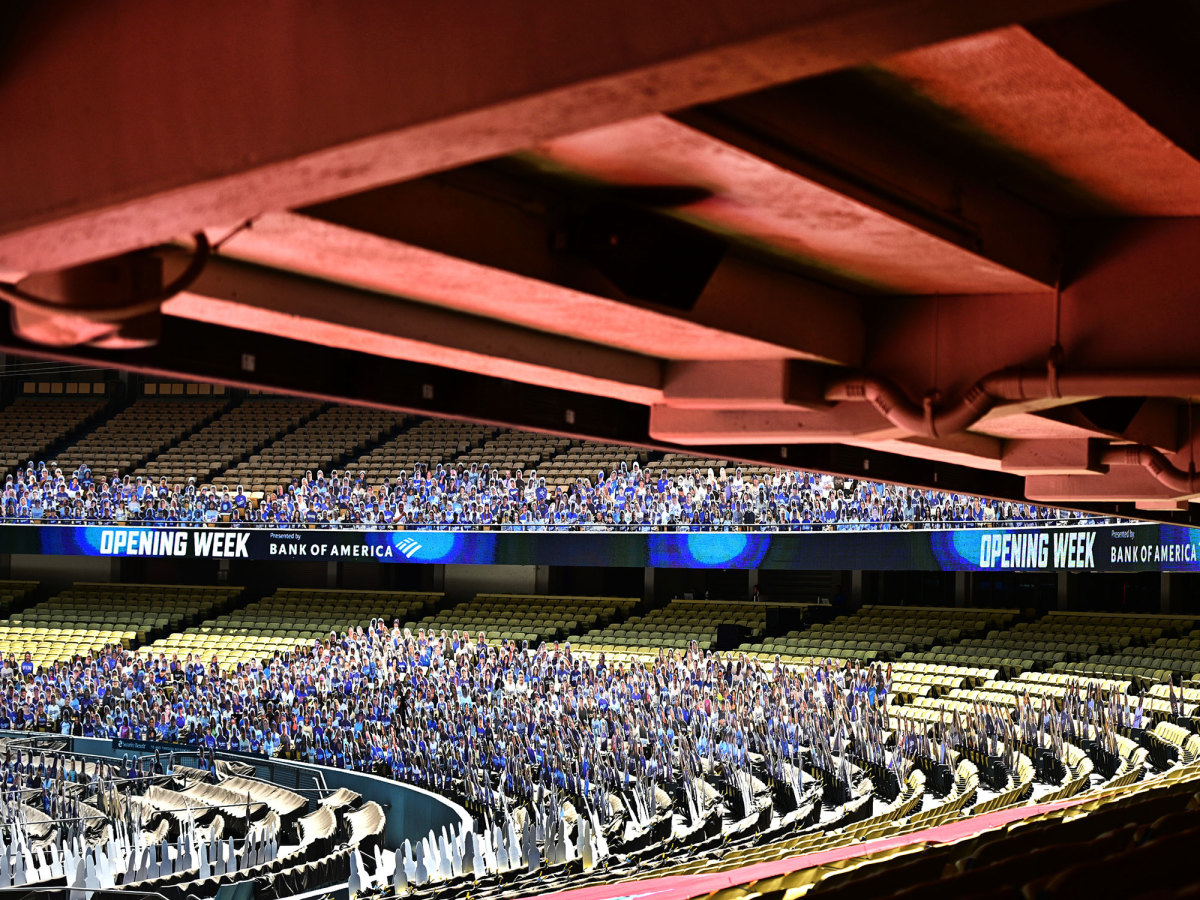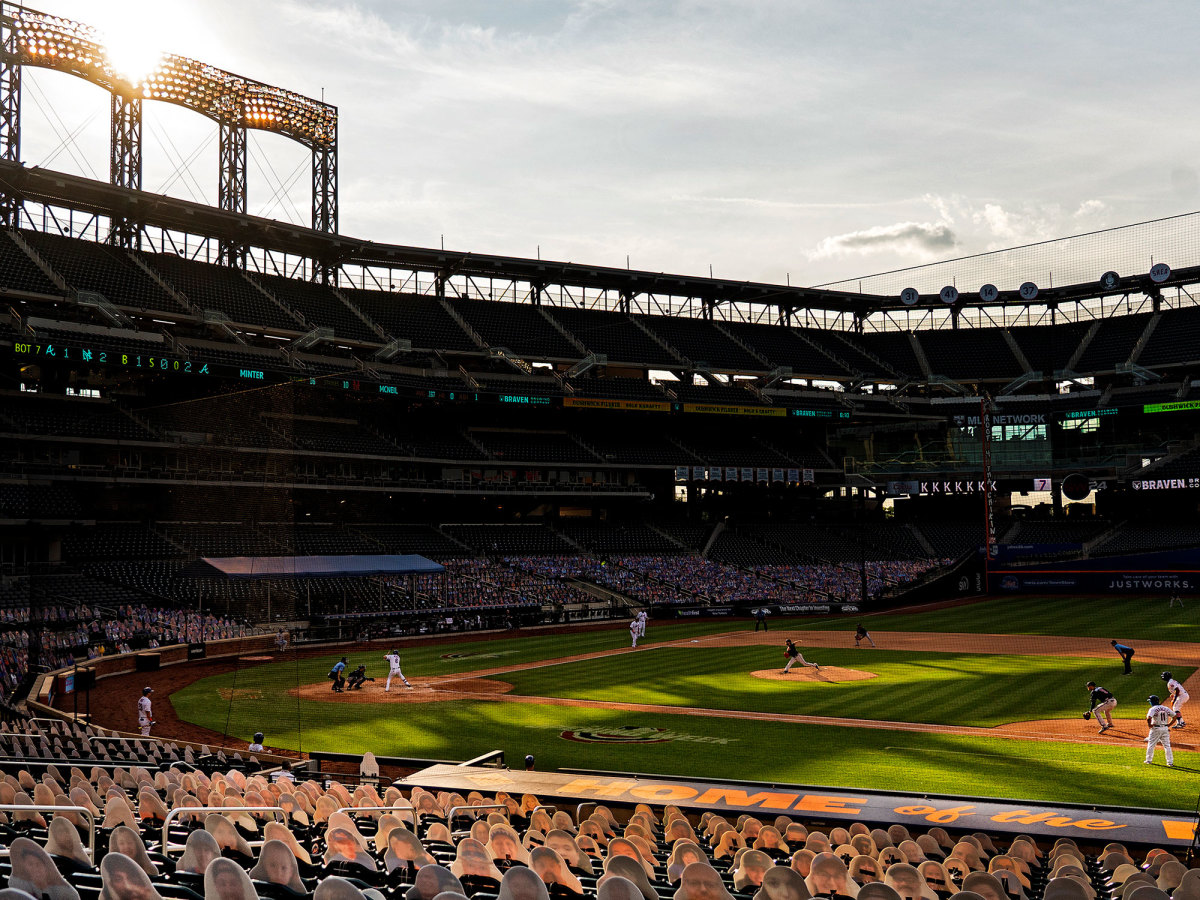How MLB Should Build Its Postseason Bubble
MLB has seen twice how COVID-19 can slam the breaks on a team's season. But the postseason schedule cannot be stopped. Owners were adamantly against extending the playoffs into November. So it makes an enormous amount of sense for MLB to huddle its playoff teams into centralized locations, especially given the success of the NHL and NBA bubbles.
What kind of shape does MLB's bubble take, though? Where do teams and leagues end up and for how long? Where should the World Series be played? SI's MLB staff weighs in on all of the above.
Tom Verducci
MLB adopted a regional schedule (less travel) for a two-month season to limit risk exposure to coronavirus. Smart move. So why would you have multiple teams criss-crossing the country for postseason games? The answer: you don’t.
Leave the first round as is: the higher seed gets all games at home in a best-of-three. Once you advance to the LDS, LCS and World Series, you adopt “bubble” arrangements for the remaining field of eight. Because there are no fans in the stands, home field and rewarding home fans does not matter. (Home win percentage is the lowest it’s been since 1968, and sixth lowest of all time.)
Your first goal is to keep everyone safe. Your next goal is to avoid weather issues–you don’t want to extend the postseason calendar even by a day.
Pick your venues and dates now. Here’s a version of how I would arrange it:
ALDS: Both series played at Globe Life Field in Texas.
NLDS: Both series played at Minute Maid Park in Houston.
Why: Centrally located venues with retractable roofs and nearby accommodations. Doubleheaders each day at each site.
ALCS: Petco Park in San Diego
NLCS: Angel Stadium in Anaheim
Why: Weather is a non-issue. League assignment as such to avoid any team having a home game.
World Series: All games at Dodger Stadium
Why: LCS winners need only to drive up the freeway. Dodger Stadium is rich in history with infrastructure and nearby housing to accommodate the big event.
In this arrangement, travel is significantly reduced. A team that wins the World Series could see as few as two or three plane trips (to Texas, to California and, if not based in California, home.) Last year the Nationals took nine trips to win the World Series.
One more wrinkle: no off days once a series starts. Without a need for travel days, you play as many as three (first round), five (LDS) and seven (LCS, World Series) consecutive days. It’s the ultimate test of a 28-man championship roster–not who has the top three starters and top three bullpen guys. The only off days will be between series.

Stephanie Apstein
A postseason bubble seems more and more to be the only way the sport is going to complete the World Series, but it's not as easy to put together as the NBA's and NHL's were. You can set up a basketball court in a ballroom; a major league-caliber field is a little harder to come by. So as nice as it would be to have everyone in one place, it's hard to see how MLB can pull that off. (Disney's Wide World of Sports complex might actually be workable, since it often hosts collegiate spring training, but it's a little busy right now.)
So then the question is whether you prioritize a campus-like feel or access to multiple fields. If you want a campus, sending the National League to San Diego, where there are several hotels within walking distance of Petco Park, and the American League to Toronto, where Rogers Centre is attached to a hotel, might work. (The Canadian government elected not to let the Blue Jays host American teams for the non-bubble regular season but let the NHL stage its bubbles in Toronto and Edmonton, so it might be amenable to a baseball postseason bubble.) If you want to cram in as many games back-to-back as possible, the National League in Southern California and the American League in Chicago would probably be the most obvious options. Weather shouldn't be an issue in Los Angeles and Anaheim, and if it becomes one in Chicago, you can move a game to Milwaukee's roofed stadium in a pinch.
I think the latter option probably makes more sense. With 16 teams making the playoffs, MLB is going to have to squeeze in four games per league per day, and it's hard to pull that off with one field. All it takes is one extra-innings disaster to throw off the whole schedule. So under my plan, two weeks before the season ends, you'd move players, staff and reporters into hotels in their local markets, test them every day and prohibit them from going anywhere other than the ballpark. Then you charter flights to Southern California and Chicago, and you set up the same rules there: Hotel, bus, park. Nowhere else. Then you cross your fingers.
Emma Baccellieri
I think the NHL is a solid model here. Given the size of the playoffs this year, a single bubble site could be logistically difficult to pull off for MLB, with hundreds of people and the need for several usable stadiums at once. So an AL playoff bubble and an NL playoff bubble—like the NHL's Eastern Conference in Toronto and Western Conference in Edmonton—seems like a good route to pursue. The World Series could then be held either at one of the bubble sites ("home field advantage" for whichever team would have had it otherwise, perhaps?) or a neutral third site. Either way, the environment would have some excitement built in that's otherwise hard to come by, a serious twist on "Win or Go Home." (And yes, I realize that the NHL is converging in Edmonton for the Conference Finals, rather than just the Stanley Cup Finals, but I think that baseball could tweak it a little and wait to come together until the World Series, wherever that may be.)
Beyond the structure of the bubble itself, I think a key lesson to take away from other leagues is just how important it is to create an experience where players (and other employees) feel like they have freedom to move around and try different things. We've seen plenty of that from the NBA, with its opportunities for players to fish and golf, and it's true that October doesn't leave much free time for activities like that in MLB. But there are so many smaller ways to achieve that sense of comfort. The NWSL, for instance, made sure to have a specialty coffee cart around its bubble campus, so players who like something a little fancier than regular hotel coffee could have the experience of stopping by a coffee shop on the morning of a game. A bubble's never going to feel like the "real world," but it can be more comfortable than a standard hotel, and little touches like that can go a long way.

Michael Shapiro
I think a two-city bubble is the clear option for the 2020 playoffs, with no shortage of options for potential hubs. New York and Los Angeles seem to be the most obvious choices, though for weather purposes, though perhaps utilizing the roofs in Arlington, Houston, Milwaukee and Arizona could make sense. One wrinkle that should be considered: a break between the LCS and World Series. Not only would this allow teams to ensure they're COVID-19 free before the Fall Classic, managers could set their rotation and lineup in an optimal manner. Perhaps that aspect of the postseason could continue into the 2020s.
Matt Martell
From observing the NBA and NHL this summer, we know having a "bubble" season is the safest method for playing professional sports during a pandemic.
The best we can do for MLB's postseason is have two bubbles—one for the American League and one for the National League—in Southern California and the Greater Phoenix area, where there is little threat of rain or snow, and enough facilities to accommodate the 16-team playoff.
We'd have a March Madness feel in October, with games staggered and happening throughout the day all week. This first round is a best-of-three, so depending on how many elimination games there are, each Game 3 could be scheduled so it doesn't overlap with the others—maximizing the TV experience considering there will be no attendance. The next series, the divisional rounds, would look the same, just without the four eliminated teams from each league.
From there, the ALCS and NLCS schedules are pretty much standard. Without the necessary travel days, MLB could include days off anyway for each series so teams could rest their pitching. With this, the AL and NL could begin their championship rounds on different days, so their off days don't overlap and MLB does not have to go a night without a primetime game.
The World Series, in this two bubble model, is the greatest logistical challenge, because one team would be traveling from one bubble to another. So the team with the better regular-season record (or winning percentage) is the one that gets "home bubble advantage." This is what it has come to. Home. Bubble. Advantage.
